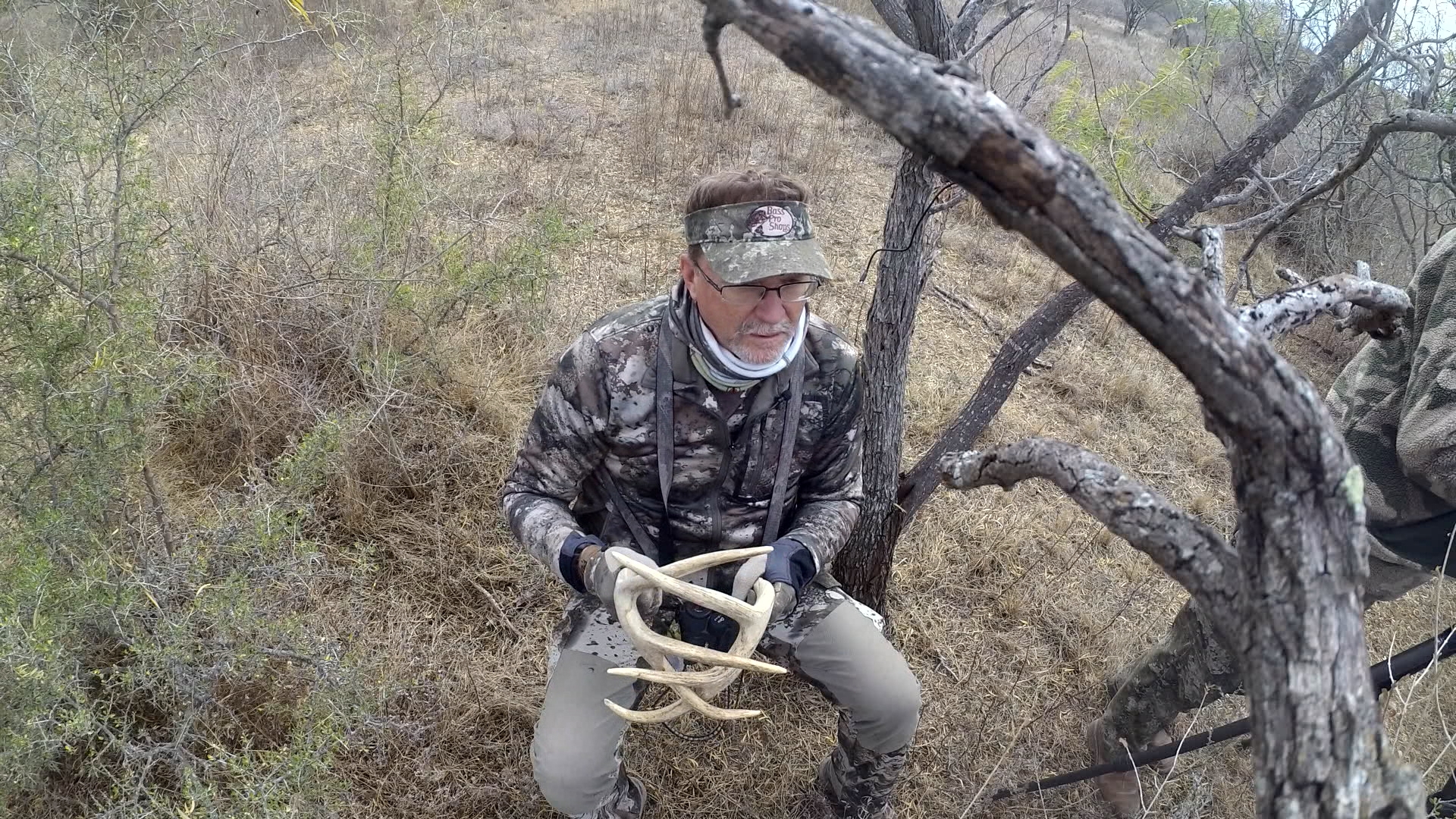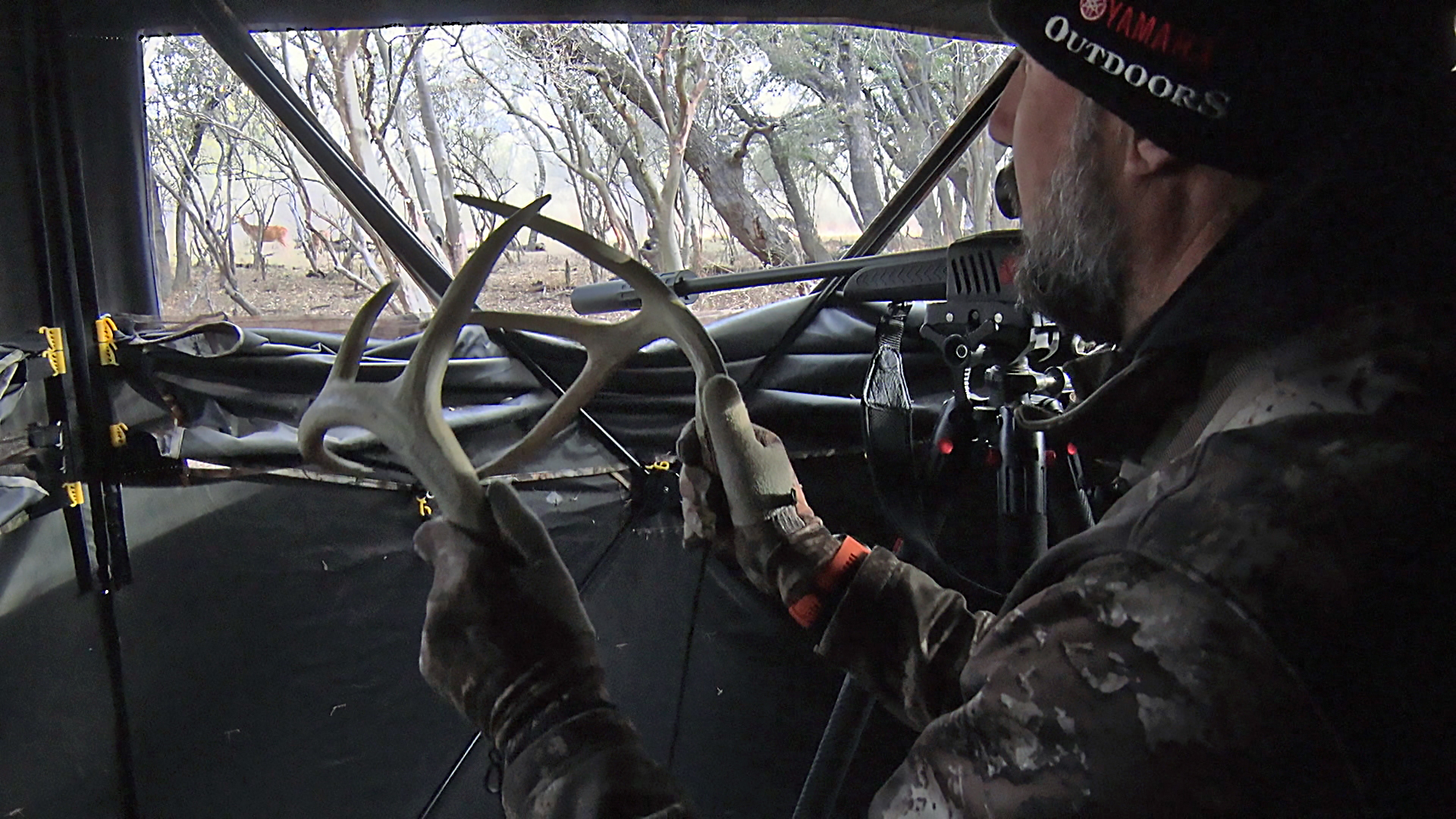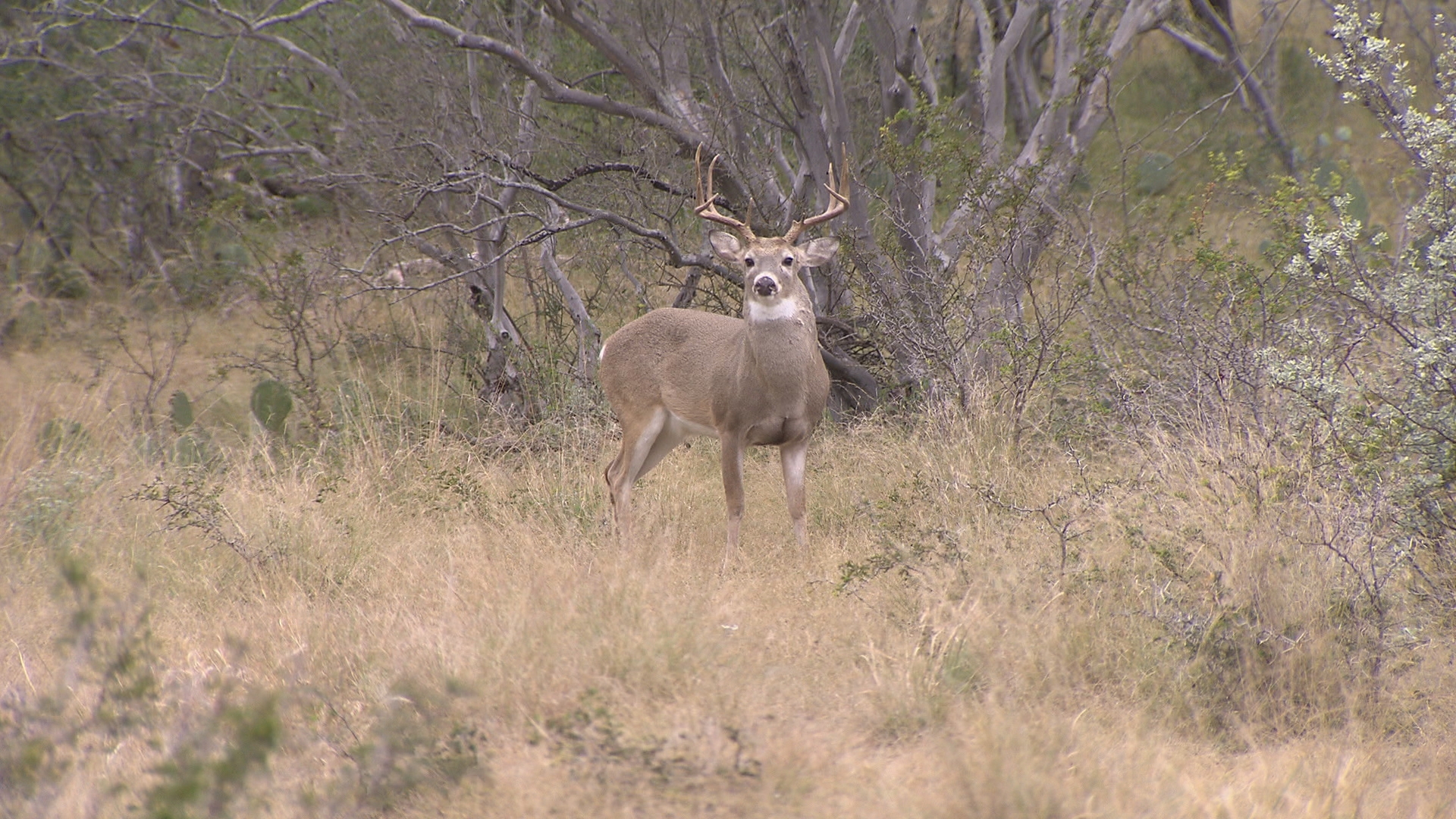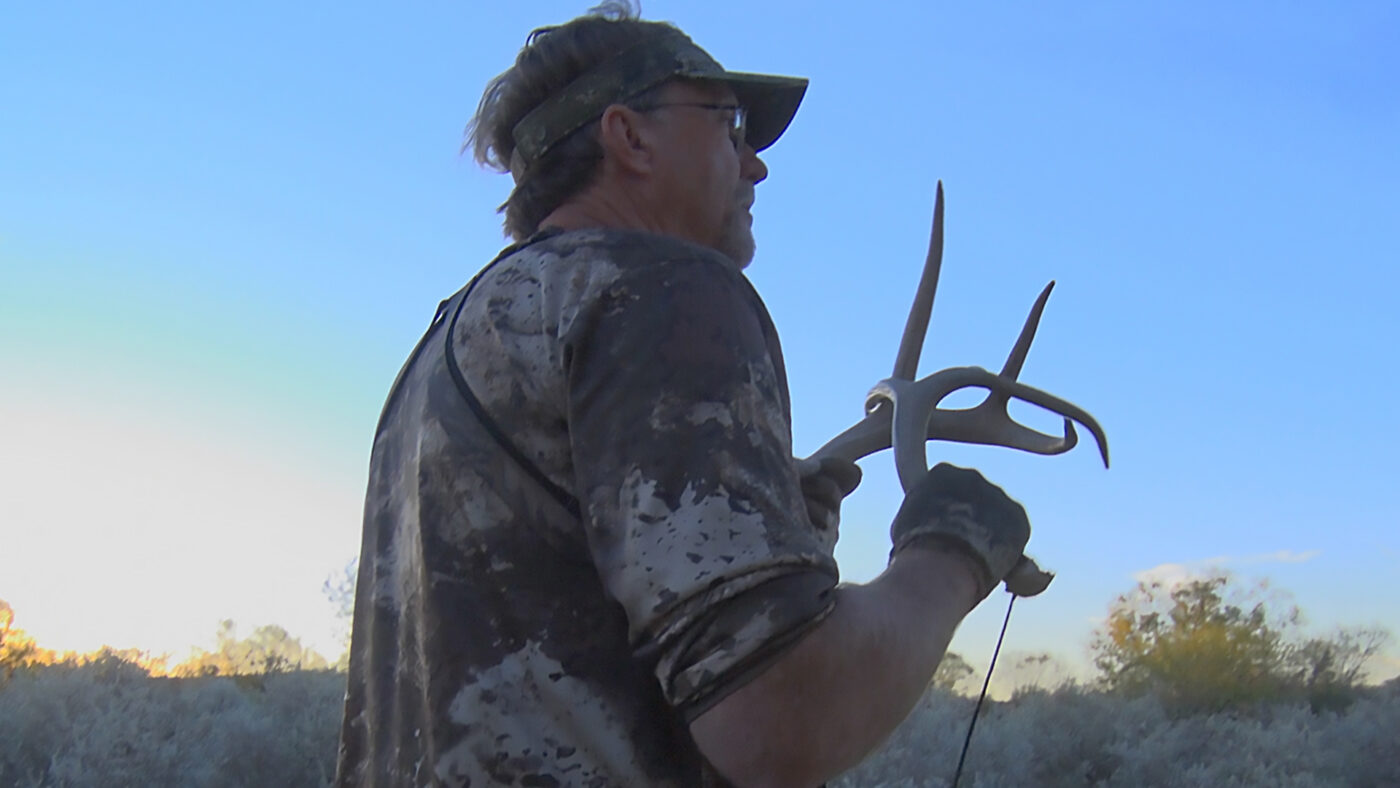By Wade Middleton

Deer are most active during the rut. In some cases, the deer that you’ve seen regularly in areas during the season have suddenly vanished as they make their rounds in search of does and territory to claim. Rattling is a fun and engaging way to attract those big territorial bucks.
When it comes to rattling, there are varied nuances that I believe can pay off for somebody. For example, if someone is high up in a tree rattling, the sounds that they would make (the aggressive sounds, the length of it, how loud it might be) would be different, in my opinion, than how somebody might rattle on the ground in a place like deep South Texas where there are a lot more deer in that fighting mode.
When I’m rattling up in a tree stand, I tend to be a little more subdued and don’t tend to rattle quite as loud. As I’m trying to attract deer, I’ll make sounds to bring them in but not bang on the trees as much. In addition, I’m not moving my body as much, and I’m lightly rattling a lot of times to create a moderate, medium sound.
However, when I’m down on the ground, and I think that massive fights are going on, the deer are rutting, and they’re coming to the antlers, I’m far more aggressive. I’m moving the angles of my antlers around, up high, down low to change the sound, which is what happens in a real deer fight. Deer don’t just stand and fight head to head and stay in one spot; their heads are going up and down, their bodies are moving, they’re spinning around, rocks are moved around, and the brush is being kicked. Therefore, I like to simulate that in a fight and if I’m hunting in a place that has big deer, I rattle really, really loud!
Soft and Subtle VS. Loud and Aggressive

I think not rattling really loud can be a mistake some people make in certain situations. By that, I mean if you’re just kind of lightly tinkling the antlers, simulating a little four- or six-point fighting each other, you’re probably going to get those results. But, if you’re in a place that has big mature deer (130-150 and up class) with big necks and bodies – they fight like two heavyweights going at it like two big linemen fighting’ each other. The fight of all fights out there! That’s the type of fight I want to simulate! I want to be louder, I want to be more aggressive, and I want to be able to make sounds that would mimic mature bucks fighting. I also understand that if I’m hunting in an area that doesn’t have that kind of deer, then I don’t want to make as many loud noises, and I don’t want to simulate those types of a buck fight; I want to be a little more subdued.
Location! Location! Location!

You must understand the location that you’re rattling in to be successful. I think that is one of the biggest keys. You must understand the time of year to be able to mimic the type of sounds you should make. If you’re hunting in an area where there are a lot of does, there are not as many deer fights, and the bucks are generally fairly small – you probably want to mimic that type of a sound. You want a light tinkling and light action.
Conversely, early in the season, a lot of the time, that’s how I want to fight or simulate a fight. I want to be a little bit lighter in my sounds and flip that switch. If I’m hunting a place with big deer, and I mean big-bodied deer that fight and when they fight its two mammoths going’ for the new heavyweight world title, I want to rock those antlers together as loud as I can. I want to make lots of sounds; you’ll see me even kick rocks and even thrash trees at times. Because, when two big boys are fighting’, that’s what’s going on. They’re not just standing’ there slapping’ each other around – they’re trying to kill each other.



Leave a Reply